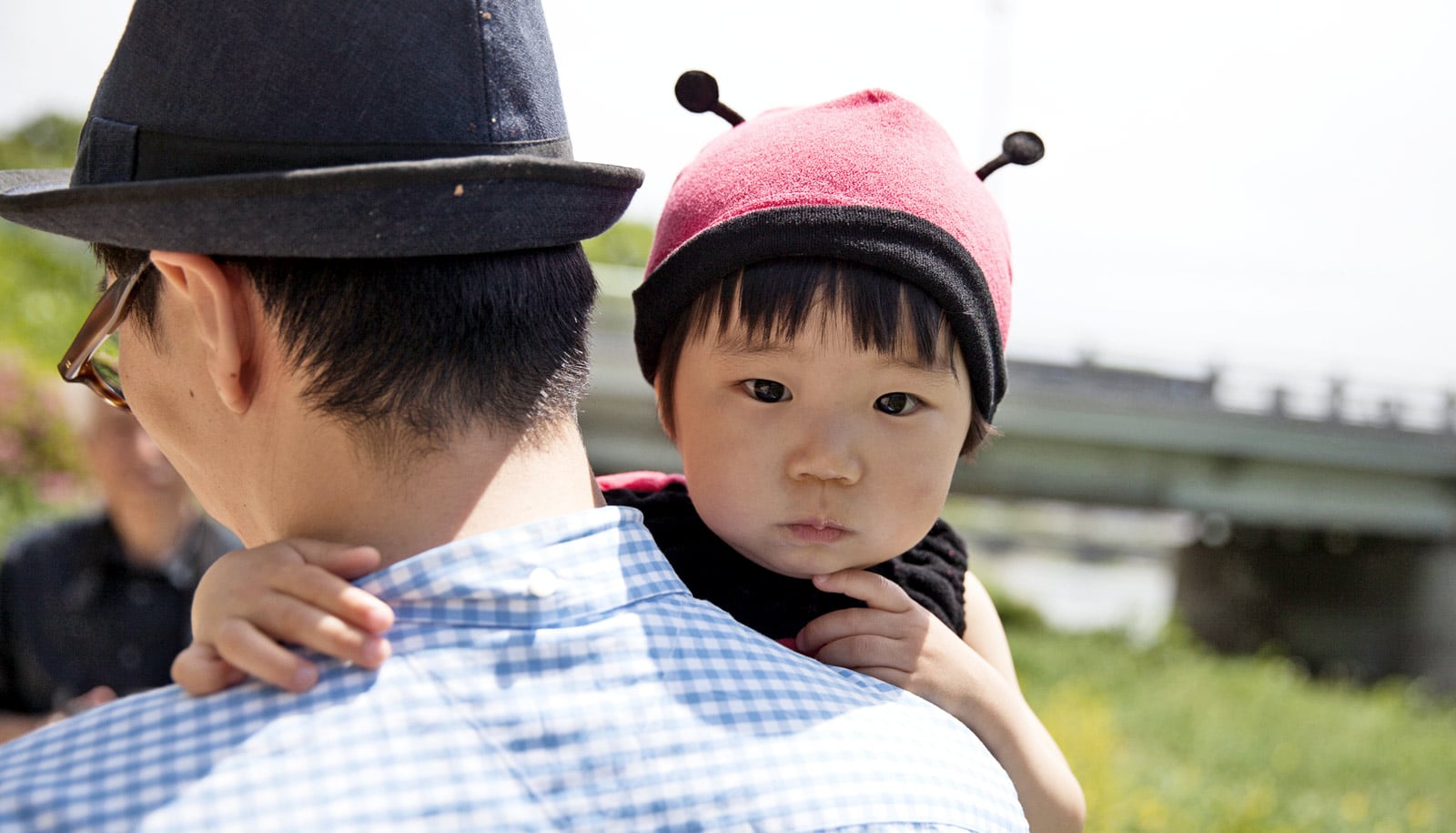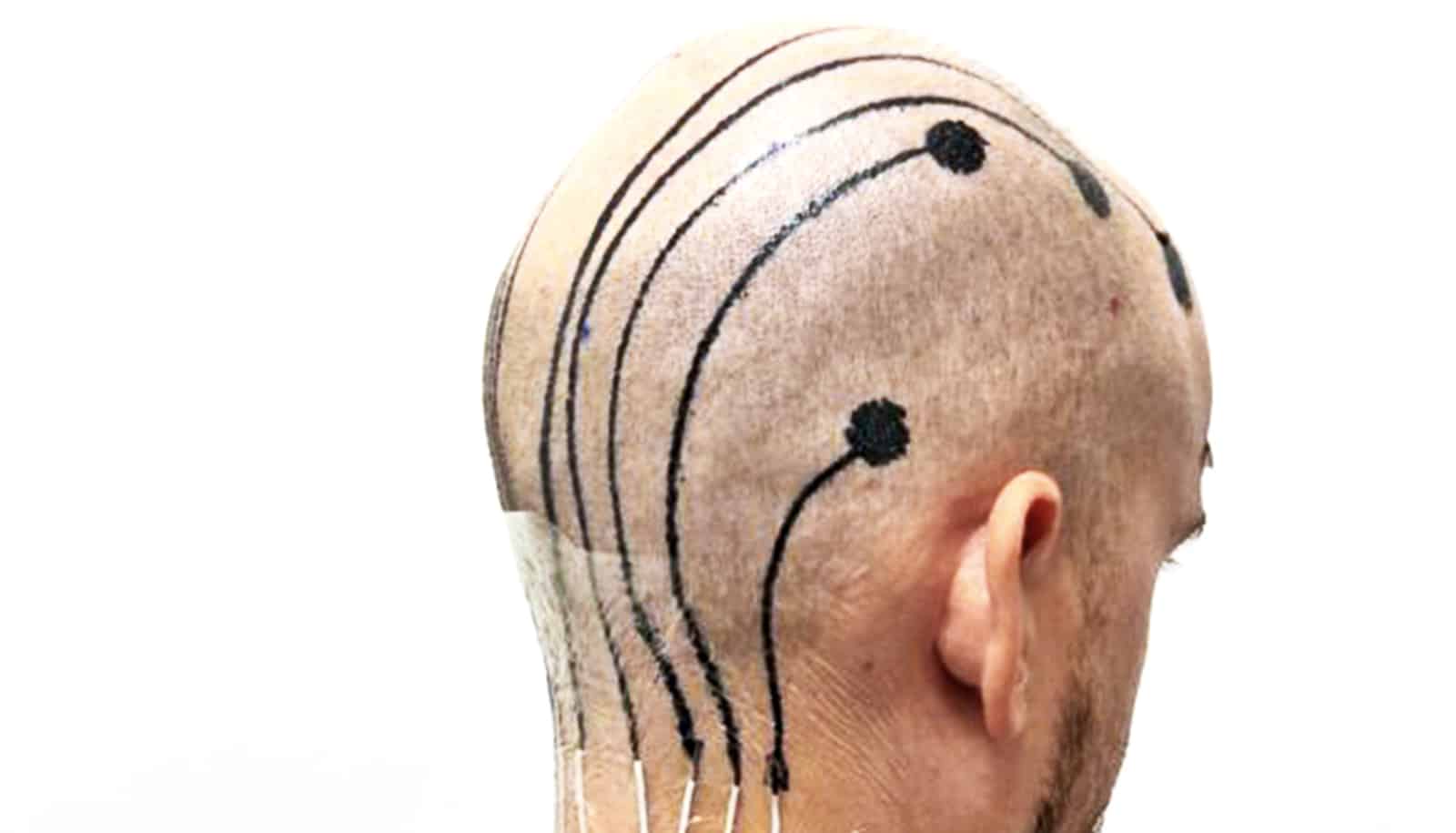Fathers—and their brain responses—differ with girls versus boys, including how attentive they are, the types of language they use, and the play they engage in.
A new study is the first to combine brain scans of fathers with behavioral data collected as fathers interacted with their children in a real-world setting.
“When a child cried out or asked for dad, fathers of daughters responded to that more than did fathers of sons,” says Jennifer Mascaro, who led the research as a postdoctoral fellow in the lab of Emory University anthropologist James Rilling, senior author of the study. “We should be aware of how unconscious notions of gender can play into the way we treat even very young children.”
In addition to being more attentive, fathers of daughters sang more often and were more likely to use words associated with sad emotions, such as “cry,” “tears,” and “lonely.” Fathers of daughters also used more words associated with the body, such as “belly,” “cheek,” “face,” “fat,” and “feet.”
Fathers of sons engaged in more rough-and-tumble play with their child and used more language related to power and achievement—words such as “best,” “win,” “super,” and “top.” In contrast, fathers of daughters used more analytical language—such as “all,” “below,” and “much.” Analytical language has been linked to future academic success.
“It’s important to note that gender-biased paternal behavior need not imply ill intentions on the part of fathers,” Rilling says. “These biases may be unconscious, or may actually reflect deliberate and altruistically motivated efforts to shape children’s behavior in line with social expectations of adult gender roles that fathers feel may benefit their children.”
Clips of daily life
Most parental studies draw from data gathered in a lab, where parents answer questions about their behavior and where they may be observed briefly as they interact with their children. This study collected behavioral data in a real-world setting through an electronic activated recorder (EAR), which was developed in the lab of coauthor Matthias Mehl at the University of Arizona.
‘Boomerang’ dads boost daughters, not sons
The participants included 52 fathers of toddlers (30 girls and 22 boys) in the Atlanta area who agreed to clip a small personal digital assistant equipped with the EAR software onto their belts and wear it for one weekday and one weekend day. The fathers were also told to leave the device charging in their child’s room at night so any nighttime interactions with their children could be recorded. The device randomly turned on for 50 seconds every nine minutes to record any ambient sound during the 48-hour period.
“People act shockingly normal when they are wearing the device,” Mascaro says. “They kind of forget they are wearing it or they say to themselves, ‘what are the odds it’s on right now?’ The EAR technology is a naturalistic observation method that helped us verify things about parental behavior that we suspected based on previous research. It also uncovered subtle biases that we didn’t necessarily hypothesize in advance.”
Feelings vs. wrestling
Further, fathers underwent functional MRI brain scans while viewing photos of an unknown adult, an unknown child, and their own child with happy, sad, or neutral facial expressions. Fathers of daughters had stronger responses to their daughters’ happy expressions in areas of the brain important for processing emotions, reward, and value. In contrast, the brains of fathers of sons responded more robustly to their child’s neutral facial expressions.
Researchers say they focused on fathers because there is less research about their roles in rearing young children than mothers.
“It’s good to pay attention to how your interactions with your sons and daughters may be biased.”
“Our study provides one of the richest datasets for fathers now available, because it combines real-world assessments of behavior with brain responses,” says Mascaro, an assistant professor in family and preventive medicine at the School of Medicine.
“It appears that men’s brain responses to their children may be related to their behaving differently with sons compared to daughters.”
The findings, published in the journal Behavioral Neuroscience, are consistent with other studies indicating that parents—both fathers and mothers—use ore emotion language with girls and engage in more rough-and-tumble play with boys. It is unclear whether these differences are due to biological and evolutionary underpinnings, cultural understandings of the way one should act, or some combination of the two.
What does this mean for the kids?
“We also don’t know the long-term child outcomes,” Mascaro says. “But future research can test the hypothesis that these differences have demonstrable impacts on things like empathy, emotional regulation, and social competence.”
The use of more emotion language with girls by fathers, for example, may help girls develop more empathy than boys. “The fact that fathers may actually be less attentive to the emotional needs of boys, perhaps despite their best intentions, is important to recognize,” Mascaro says. “Validating emotions is good for everyone—not just daughters.”
Restricted emotions in adult men is linked to depression, decreased social intimacy, marital dissatisfaction, and a lower likelihood of seeking mental health treatment.
Research also shows that many adolescent girls have negative body images. “We found that fathers are using more language about the body with girls than with boys, and the differences appear with children who are just one-to-three years old,” Mascaro says.
And while they use more words about the body with girls, fathers engage in more physical rough-and-tumble play with boys, an activity that research has shown is important to help young children develop social acuity and emotional regulation.
“Most parents really are trying to do the best they can for their children,” Mascaro says. “A take-home point is that it’s good to pay attention to how your interactions with your sons and daughters may be biased. We need to do more research to try to understand if these subtle differences may have important effects in the long term.”
The American Psychological Association contributed to this story.
Source: Emory University



